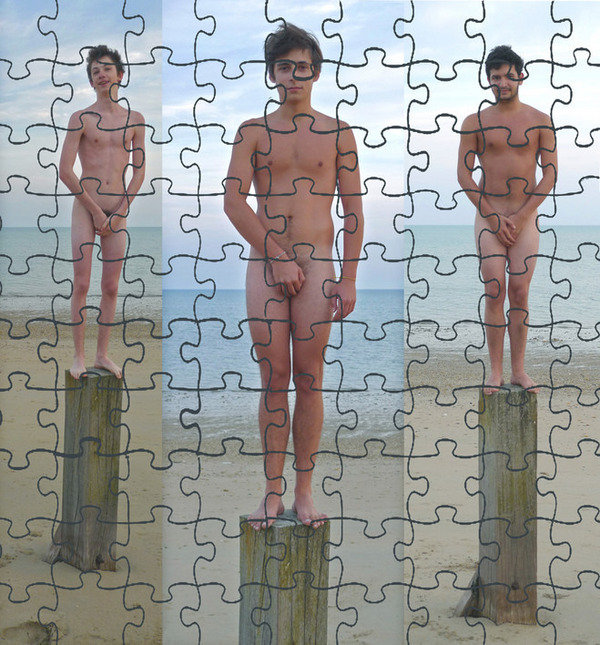Agnes Varda
dal 7/2/2014 al 4/4/2014
Segnalato da
7/2/2014
Agnes Varda
Galerie Nathalie Obadia, Paris
Triptyques atypiques. The point is to juxtapose the fascination exerted by still or fixed images at a given moment and the energy exuded by moving images directly linked to the central figure.

Nathalie Obadia presents Triptyques Atypiques, Agnès Varda’s first solo exhibition at her Parisian gallery, but the third collaboration with this emblematic Nouvelle Vague director who likes to describe herself as “an old filmmaker who has become a young visual artist”.
While LACMA (the Los Angeles County Museum of Art) is exhibiting a set of pieces, including a cabin made of film stock, through June 2014, under the title Agnès Varda in Californialand, Galerie Nathalie Obadia is presenting recent works by this artist, a bold combination of photographs, videos and various materials. Triptyques Atypiques refers to the number 3 and to the old triptych paintings that Agnès is fond of.
The Portraits à volets vidéo comprise a central image, a photograph, generally in black and white (gelatin silver), printed and hung on the wall, with videos projected on either side. The point is to juxtapose the fascination exerted by still or fixed images at a given moment and the energy exuded by moving images directly linked to the central figure:
Portrait of Kalmi, hip-hopper and his almost acrobatic performances
Marie dans le vent: tousled but still, surrounded by wind turbines spinning with hypnotic regularity
Le ciré noir (The Black Waterproof), Achille and Pâris, enfants de cirque, who posed together and, though still very young, work as professionals at the Cirque Phocéen (circus)
Alice et les vaches blanches (Alice and the White Cows), which, at moments, given the calm of the cows, offers viewers — more than the other portraits with video panels — a mediation on our understanding of movement.
There are other triptych portraits, this time wholly photographic ones, whether in colour or blackand- white. For these, Varda has conceived metal frames vaguely inspired by the work of Mexican artisans, including the hinges. The photographs in the side panels of each triptych are related to the person in the photograph: La jeune fille à la tourterelle (Young Girl with Turtle Dove, 1950), Miquel Barceló (2011), Rosalie, fille d’Agnès (Rosalie, Agnès’s Daughter , 2013).
Agnès Varda suggests two other approaches to the triptych:
An image of historical Paris and a little dog (1953), cut in three
an installation of three objects in homage to Lautréamont
We know that Agnès Varda has already worked on the theme of vision in three images in the Triptyque de Noirmoutier (2004), shown at the Fondation Cartier pour l’Art Contemporain, which has acquired the work, as has MOMA.
Visitors to the gallery are also greeted by a fragmented composition, but this time in the form of a jigsaw puzzle assembled and exhibited. Five holidaymaking school leavers who had just taken their baccalauréat posed for Agnès on her favourite beach in Noirmoutier.
As the exception that confirms the rule of three, Agnès Varda is exhibiting seven images taken from one of the sequences of her film Sans toit ni loi (Vagabond, 1985), thereby continuing her reflection on photography and video and their relation to time and movement.
Played by Sandrine Bonnaire, Mona is attacked by the grotesquely disguised Paillasses, who cover her with wine lees as part of a folk ritual.
Immobilising these filmed moments, the subject, meaning and rhythm of the film disappear, their place being taken by a series of abstract images, the traces of movements.
Agnès Varda on Triptyques Atypiques :
“A title that rhymes, with a wandering Y. A project connected with old paintings and my taste for the figure 3 were the starting point for this project for an exhibition at Nathalie Obadia. Various triptychs: photographs in three parts, gelatin-silver portraits with video side panels, frames in 3 panels… but not three little piggies. For the atypical ones, we’ll see. Also, a jigsaw puzzle of 167 interlocking pieces to reconstitute an image; it’s a game that becomes static: baccalauréat students who posed on posts like resting seagulls. We capture the cessation of movement, or a 24th of a second. I like to bear witness to anti-violence by moving around the media at my disposal: photography, cinema and video. Black-and-white and colour… Paper, wood. Metal and cardboard, everything can be made into a proposition.“
Agnès Varda, janvier 2014.
Image: Agnès Varda, Le Puzzle des 5 bacheliers, détail Courtesy of Agnès Varda & Galerie Nathalie Obadia, Paris / Bruxelles
Opening Saturday, February 8 18h
Galerie Nathalie Obadia
3 rue du Cloitre Saint-Merri Paris
Admission free



